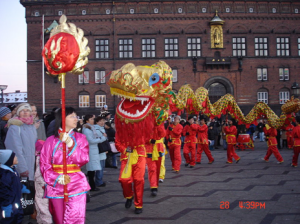Language is a window to the human mind, a vessel that carries our thoughts, emotions, and ideas from one person to another. However, when we cross the linguistic bridge, we often find that the same words and phrases don’t always carry the same meanings or emotions. This is where translation, a fascinating and intricate process, comes into play. Beyond mere linguistic conversion, translation profoundly impacts how we perceive content, as it involves navigating the complex interplay between language and psychology. In this article, we will delve into the psychology of translation, exploring how linguistic choices can significantly shape our perception of content in different languages.
The Multifaceted Nature of and Psychology of Translation
Translation is more than just swapping words between languages. It involves a comprehensive understanding of the source text’s cultural context, nuances, idioms, and the psychology behind its message. When a translator approaches a text, they must understand the literal meaning, cultural connotations, and emotional undertones. This complexity inherent in translation makes it a delicate act of balancing linguistic accuracy and conveying the intended message.
Language and Perception
Language is not just a tool for communication; it actively shapes how we perceive the world around us. The Sapir-Whorf hypothesis suggests that our language influences our thoughts and cognition. This concept, known as linguistic relativity, implies that our perception of the world is molded by the linguistic categories available in our language.
When we translate a message from one language to another, we are not just transferring words but also cultural and conceptual baggage. This shift in linguistic perspective can lead to different interpretations of the same content, and these variations can be subtle or profound, depending on the languages involved.
The Power of Words
Words carry immense power. They evoke emotions, trigger memories, and shape our beliefs. The choice of words in translation plays a pivotal role in determining the emotional impact of a message. For example, consider the English word “freedom” and its translation into other languages. Depending on the target language, “freedom” may be translated as “libertad” in Spanish, “liberté” in French, or “Freiheit” in German. Each of these translations carries its own cultural and historical connotations, influencing how speakers of these languages perceive the concept of freedom.
Moreover, some languages have words that do not have direct equivalents in other languages. For instance, the Japanese word “tsundoku” refers to the habit of acquiring books and letting them pile up, unread. There is no precise English equivalent, and when translated, the nuance of the word may be lost, affecting the perception of this concept among English speakers.
Cultural Nuances and Context
Translation is deeply intertwined with culture. What is considered humorous, respectful, or offensive can vary greatly between cultures. Therefore, translators must navigate this cultural minefield to ensure that the translated content is linguistically accurate and culturally appropriate. The failure to do so can lead to misunderstandings, misinterpretations, or even unintentional offense.
For example, the concept of “face” in Asian cultures carries a complex web of meanings related to reputation, social standing, and dignity. Translating this concept into languages that lack an equivalent term can lead to a loss of nuance and affect how the content is perceived.
Translating Emotions and Tone
One of the most challenging aspects of translation is conveying the emotional tone of the source text. Emotions are often subtle and context-dependent, making finding precise equivalents in another language challenging. Translators must choose words that match the intended emotion and consider the cultural norms for expressing feelings.
Consider a simple sentence like “I’m sorry.” This phrase can convey a wide range of emotions in English, from sincere remorse to a polite form of apology. Translating this phrase into another language requires careful consideration of the emotional connotations and cultural norms surrounding apologies.
The Role of the Translator
Translators are not just language experts but also cultural mediators and psychologists. They must bridge the gap between languages and minds, ensuring that the content’s meaning and emotional impact are preserved as accurately as possible. This often requires creativity, empathy, and a deep understanding of both the source and target cultures.
Wrapping Up on the Psychology of Translation
Translation is a fascinating interplay of language and psychology. It involves much more than converting words from one language to another; it encompasses cultural nuances, emotions, and the intricate dance of perception. The choices a translator makes, from word selection to cultural adaptation, profoundly impact how we perceive content in different languages. Understanding the psychology of translation is crucial for effective communication and a testament to the power of language in shaping our thoughts and emotions across linguistic borders. As we continue to explore the world through the lens of translation, we gain a deeper appreciation for the richness and complexity of human communication.














Sorry, the comment form is closed at this time.